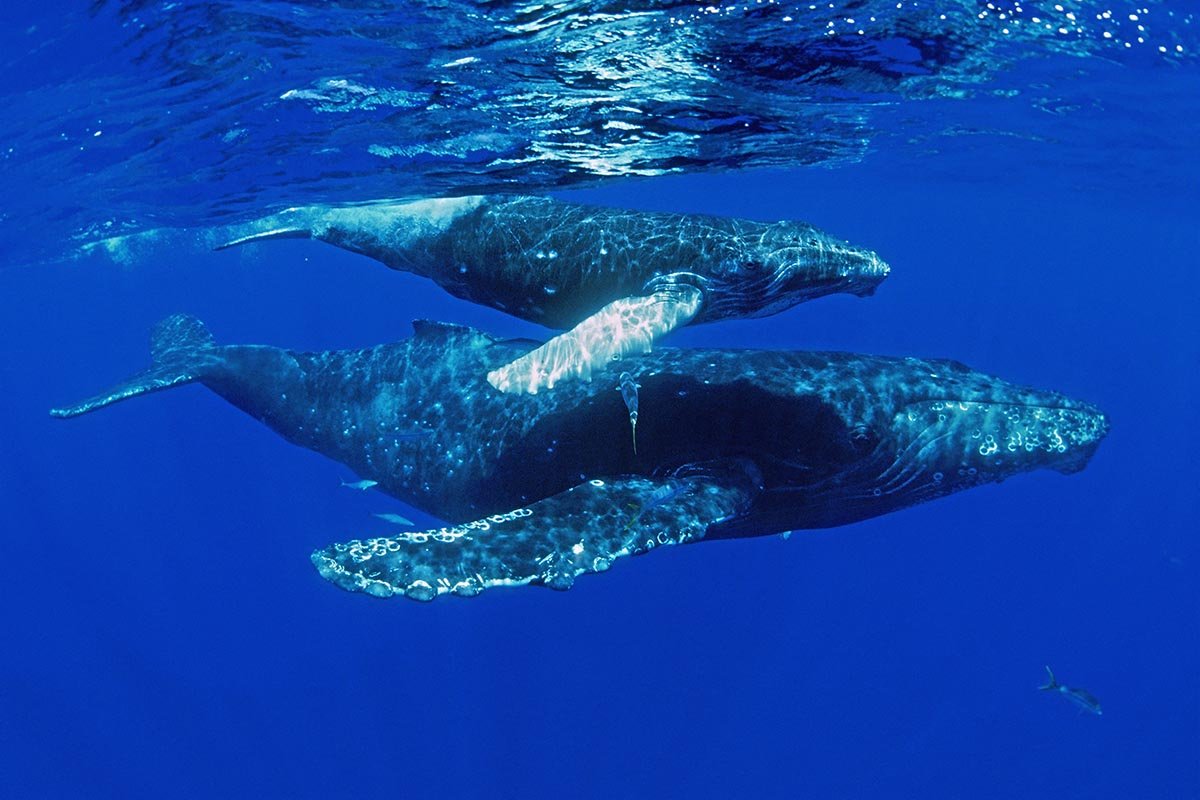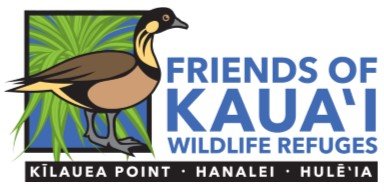
Marine Life
Because of its location at the northernmost tip of the island a couple hundred feet above sea level, Kīlauea Point NWR provides a great vantage point for viewing seabirds, and marine life. At least eighteen species of toothed whales and dolphins, and five species of sea turtles are known to inhabit Hawaiian waters, but most will never be seen due to their lack of abundance, their behavioral patterns, and/or how far out to sea they live. Luckily though, there are three species of marine mammals and one marine reptile that can be observed by visitors at the Refuge.
-

HUMPBACK WHALE – KOHOLĀ
The humpback whale is also a federally endangered species. It migrates to Hawaiʻi from Alaskan waters in November and December and remains here until April. During their overwintering time In Hawaiʻi, these baleen whales do not actively feed (krill is their food of choice and not found in Hawaiʻi), but they do come here to give birth and to mate. The range of behaviors that this species demonstrates above the water surface, and its proximity to shore, make it very visible and endearing. Visitors to Kīlauea Point NWR have a wide view plane of whales on the north shore of the island and the refuge is one of the designated Annual Statewide Humpback Whale Count locations.
NOVEMBER - APRIL
-
HAWAIIAN MONK SEAL - ʻĪLIO HOLO I KA UAUA
The Hawaiian monk seal is endemic to Hawaiʻi and is a highly endangered species. Research and protection efforts are focused on conserving monk seals but the survival of this rare species still hangs in the balance. In recent years more of the seals have been moving down to the main inhabited islands from the remote northwestern Hawaiian Islands. Visitors and residents are learning how to appreciate this rare animal without interfering with it. Sometimes a monk seal can be seen “hauled up” down in the rocky cove to the east of the lighthouse. Scopes are available along the pathway help visitors get a closer look. Monk seals are one of only two endemic mammals in Hawaii, the other being the Hawaiian Hoary bat. Since Hawaii is so isolated from any other land mass it is no wonder that the only mammals that made it on their own would arrive via water or wings.
YEAR ROUND
-
SPINNER DOLPHIN - NAIʻA
Spinner dolphins are most often seen from the refuge in the summertime when dolphin groups, called pods (sometimes consisting of more than fifty individuals!) tend to frequent the bay to the west of the lighthouse. Visitors are treated to the views of these dolphins as they repeatedly leap from the water in a spinning motion and splash down dramatically – thus the name “spinner” dolphin. Their acrobatics are unmistakable and entertaining.
Bottlenose dolphins, another common dolphin species in Hawaiʻi and often seen from boats, are certainly present in the waters off the Point, but because they are less dramatically active above the surface of the water than the spinners are, they are more likely to only be spotted by the most astute and patient observers.
YEAR ROUND
-
PACIFIC GREEN SEA TURTLE – HONU
The green sea turtle found in Hawaiian waters is known as the Pacific green sea turtle, but people in Hawaiʻi more commonly use the Hawaiian name “honu.” The Pacific green sea turtle is a threatened species and is protected under state and federal laws. The honu is the turtle most likely to be seen by swimmers, snorkelers, and divers in Hawaii, but also by visitors to Kīlauea Point NWR. Most honu in Hawaiʻi breed on the small islands northwest of the main inhabited Hawaiian Islands, but some honu also nest on a few of Kauaʻi’s more remote beaches. Green sea turtles feed on algae growing in shallow coastal waters, so visitors to the refuge may spot honu by looking down into the cove to the east of the lighthouse when the waters are relatively calm.
YEAR ROUND




